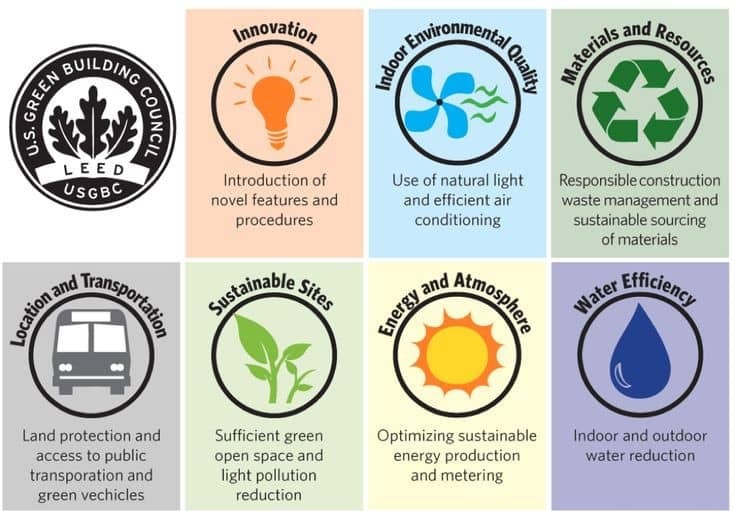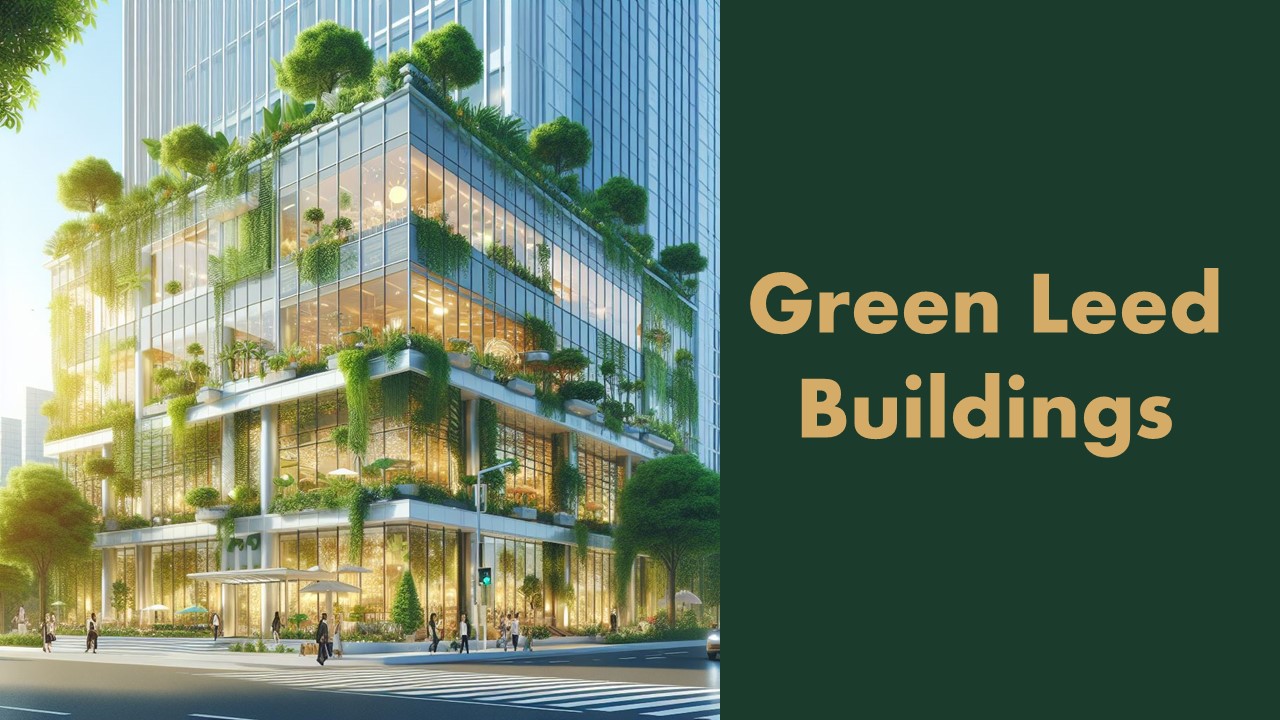Green buildings, also known as sustainable buildings, are designed and constructed to minimize their environmental impact throughout their life cycle. This includes using sustainable materials, reducing energy and water consumption, and improving indoor air quality.
LEED (Leadership in Energy and Environmental Design) is a widely recognized green building certification program that provides a framework for designing, constructing, and operating buildings that are environmentally responsible, profitable, and healthy. Here are some of the key advantages of green LEED buildings:
Environmental benefits:
LEED buildings help to reduce greenhouse gas emissions, conserve water and energy, and minimize waste. Green buildings help combat climate change by reducing greenhouse gas emissions, conserving water and energy, and minimizing waste. They often incorporate features like energy-efficient appliances, water-saving fixtures, and recycled building materials to lessen their environmental footprint.Economic benefits:
LEED buildings can lower operating costs through reduced energy and water consumption, and they may also qualify for tax incentives and other financial benefits.LEED buildings can be cost-effective in the long run. They typically have lower operating costs due to their energy and water efficiency, and they may also qualify for tax incentives and other financial benefits. Additionally, their durability and reduced maintenance needs can further contribute to cost savings.Health benefits:
LEED buildings can improve indoor air quality, which can lead to better health outcomes for occupants. They can also provide access to natural light and ventilation, which can improve occupant well-being and productivity.Green buildings prioritize the health and well-being of occupants. They often feature improved indoor air quality through better ventilation and the use of non-toxic materials, which can help reduce respiratory problems, allergies, and other health issues. Additionally, access to natural light and improved thermal comfort can enhance occupant well-being and productivity.Market benefits:
LEED buildings are often seen as more desirable by tenants and buyers, which can lead to higher occupancy rates and property values.LEED certification is a globally recognized symbol of sustainability, making LEED buildings more attractive to tenants and buyers. This can translate to higher occupancy rates, increased property values, and a positive reputation for building owners.

